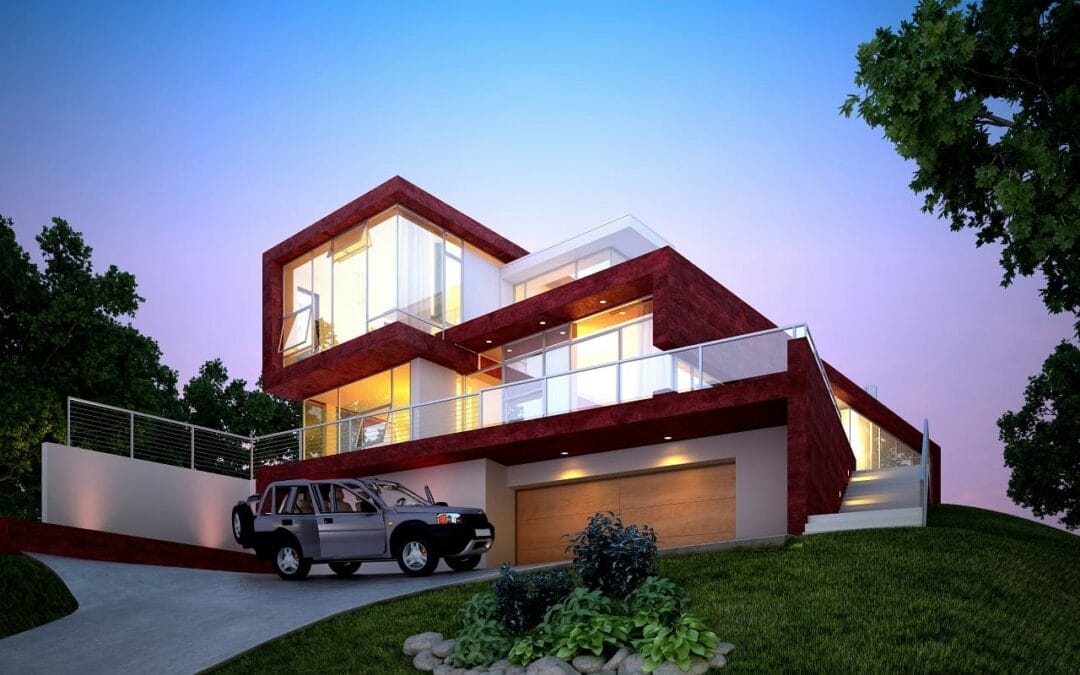In today’s world, energy efficiency plays a critical role, shaping the way we approach home building and design. Constructing a custom home in Southern Utah Valley presents a unique opportunity to prioritize energy efficiency, integrating the latest innovative design principles, materials, and technologies that promote eco-friendly living.
Embracing energy-efficient design not only benefits the environment but also results in long-term cost savings, improved comfort, and even increased property value. As a forward-thinking homeowner, you’ll want to ensure that your custom residence reflects both your lifestyle ideals and commitment to sustainable living.
In this blog post, we will delve into the essential components of energy-efficient custom home design in Southern Utah Valley. From incorporating renewable energy sources and energy-saving technologies to maximizing insulation and choosing eco-friendly materials, we’ll discuss the best practices for optimizing your home’s energy performance and reducing its environmental footprint.
By understanding the principles of energy-efficient design, you can make informed decisions that will enhance your custom home’s comfort, sustainability, and long-term value.
1. Harnessing Renewable Energy Sources
Incorporating renewable energy sources into your custom home design can significantly reduce your reliance on non-renewable resources, lowering energy costs and environmental impact:
– Solar Energy Solutions: Install rooftop solar panels or solar-ready systems to harness the power of the sun, producing clean and renewable energy for your home’s electrical needs.
– Geothermal Heating and Cooling: Implement a geothermal heat pump system, using the stable underground temperature to provide energy-efficient heating and cooling for your home.
– Small Wind Turbine Systems: Consider the feasibility of installing a small wind turbine on your property, converting wind energy into usable electricity for your household needs.
2. Optimizing Insulation and High-Efficiency Windows
Maximizing your home’s insulation and choosing energy-efficient windows can improve its thermal performance, preventing energy loss and minimizing heating and cooling costs:
– High-Performance Insulation Materials: Choose high-quality insulation materials, such as spray foam or cellulose, for your home’s walls, roof, and foundation, ensuring a well-insulated and energy-efficient building envelope.
– Energy-Efficient Windows: Invest in high-performance windows with features such as low-emissivity (low-E) coatings, argon gas fill, or triple-pane glazing, which help reduce heat transfer and maintain optimal indoor temperature conditions year-round.
– Insulation Installation Best Practices: Ensure proper installation of insulation materials, avoiding gaps or compression, in order to maximize the energy-saving benefits and minimize thermal bridging.
3. Energy-Saving Technologies and Systems
Leverage innovative energy-saving technologies and systems to further increase your home’s energy-efficiency and automate energy management:
– Smart Thermostats: Install a smart thermostat to automatically adjust heating and cooling settings based on your daily routines, the time of day, and even local weather conditions, reducing energy consumption.
– Energy-Efficient Appliances: Choose Energy Star-rated appliances for your home, ensuring they consume the least amount of energy possible while still providing top-notch performance.
– LED Lighting: Opt for energy-efficient LED lighting throughout your home, lowering energy usage while providing long-lasting, high-quality light.
– Home Energy Monitoring System: Implement a home energy monitoring system, providing real-time feedback on your home’s energy consumption, so you can make informed decisions on energy use and identify potential savings opportunities.
4. Sustainable Building Materials and Practices
Select sustainable building materials and incorporate eco-friendly construction practices to further enhance your custom home’s energy efficiency and reduce its environmental impact:
– Recycled or Reclaimed Materials: Use recycled or reclaimed materials, such as reclaimed wood, recycled metal, or reclaimed brick, which reduce the use of new resources and lower the overall carbon footprint of your home’s construction.
– Local and Sustainable Building Materials: Opt for responsibly-sourced, sustainable building materials, such as locally-harvested hardwoods, sustainably-produced concrete, or environmentally-friendly insulation options, that minimize transportation-related emissions and support regional economies.
– Breeam, LEED, or HERS Certification: Align your home building project with recognized green building certification programs such as BREEAM, LEED, or HERS, showcasing your commitment to sustainability and energy efficiency.
Final Thoughts
Incorporating energy efficiency in your custom Southern Utah Valley home design is not only an environmentally responsible decision but also a smart investment that can save you money and increase your property value.
By harnessing renewable energy sources, optimizing insulation and high-efficiency windows, leveraging energy-saving technologies, and adopting sustainable building materials and practices, you’ll create a comfortable and eco-friendly living space that you can be proud of for years to come.
As a premier home builder in Southern Utah Valley, we are committed to providing our clients with the latest innovations and best practices in energy-efficient home design. Contact us today to discuss incorporating energy efficiency into your custom Southern Utah Valley home and explore the wide range of sustainable design options available.
Together, let’s create a comfortable, eco-conscious living space that aligns with your unique vision and values, paving the way for a more sustainable future!

